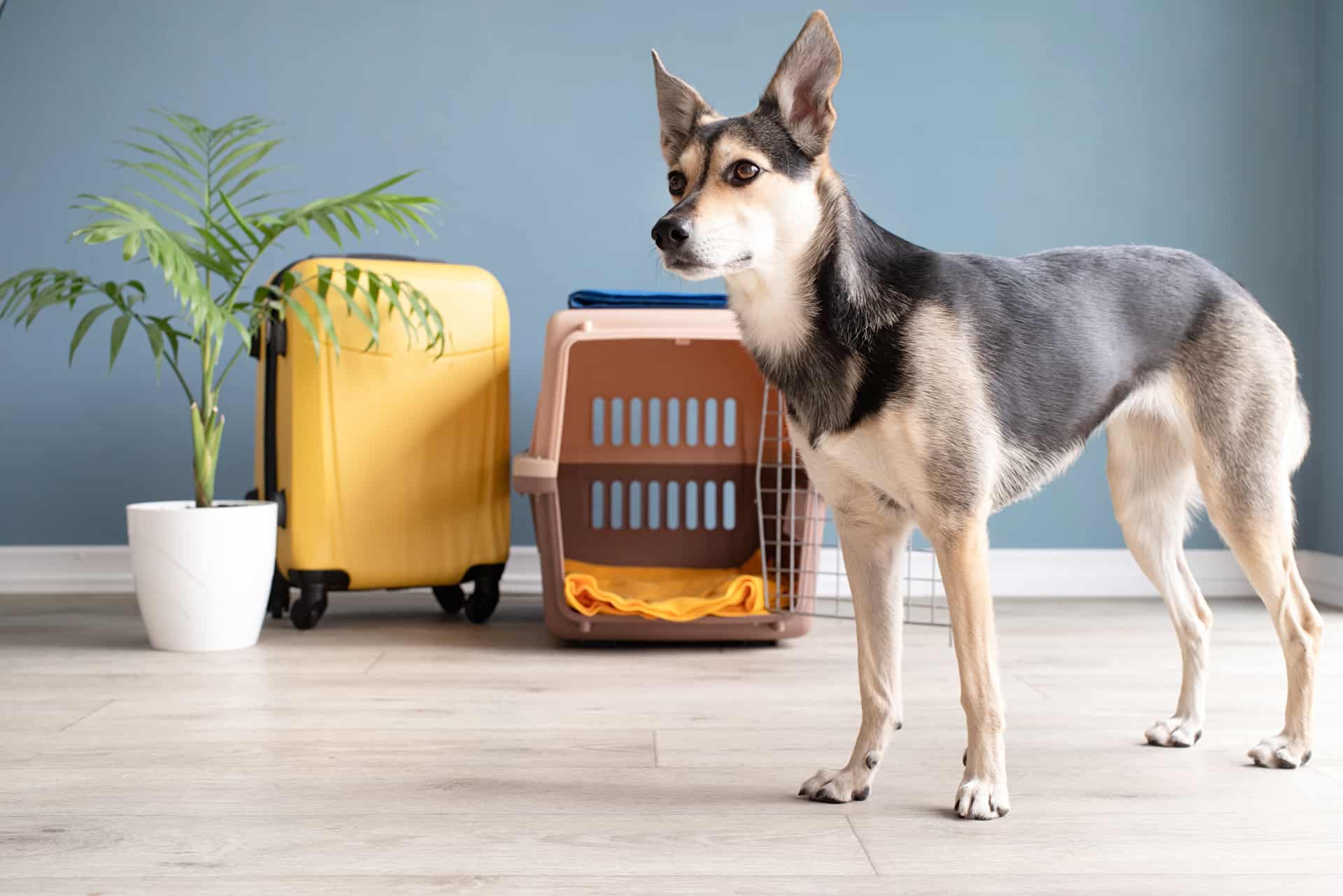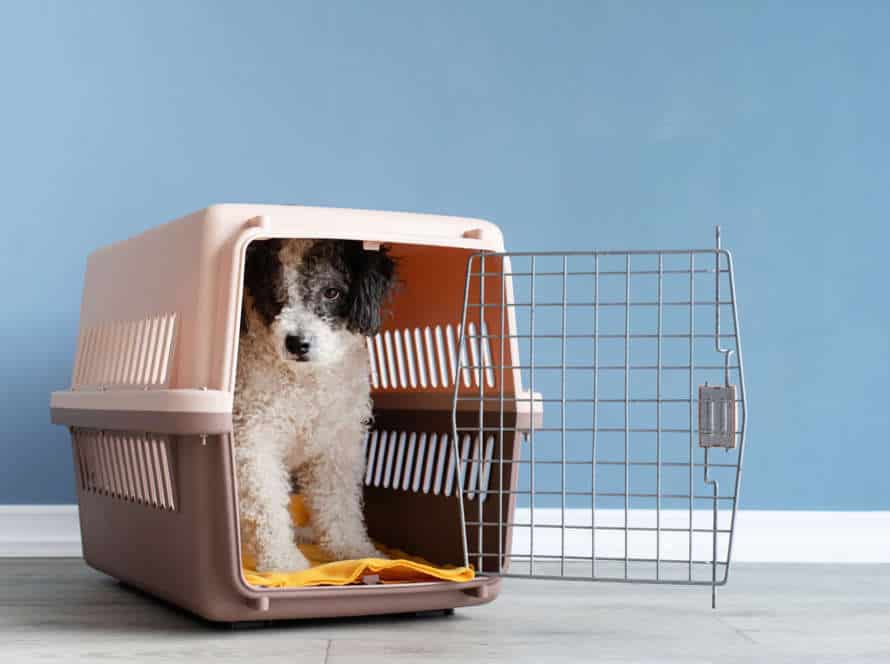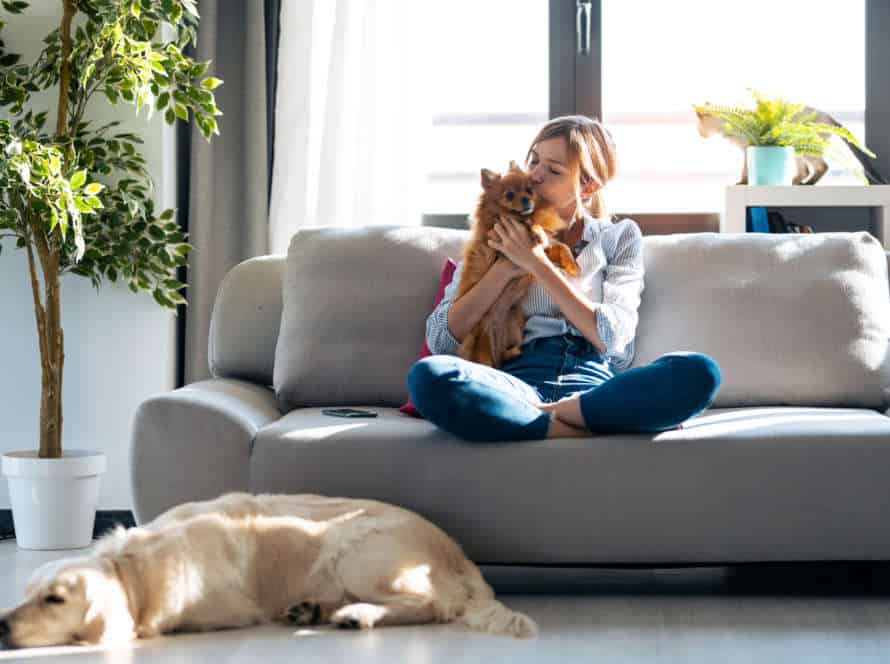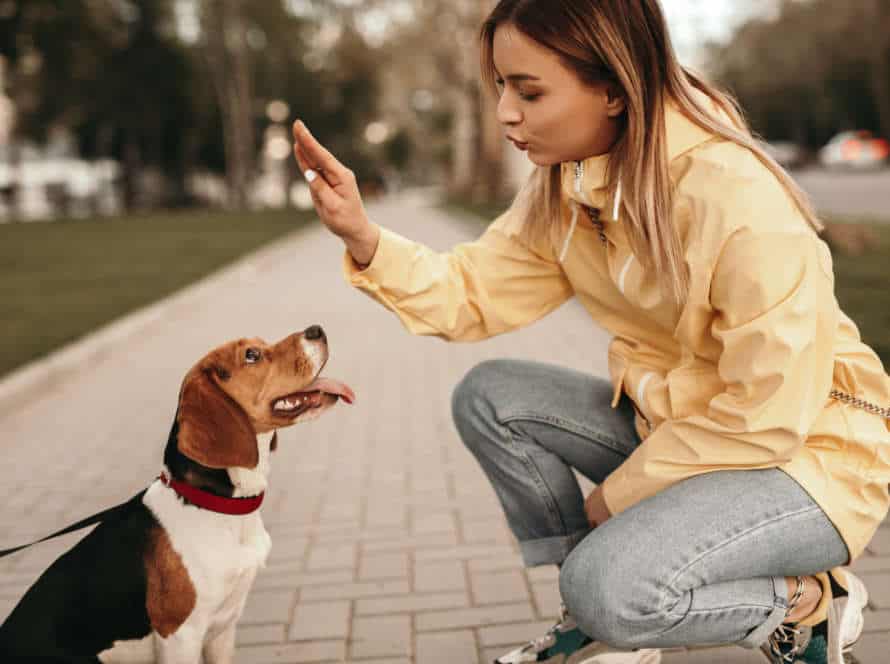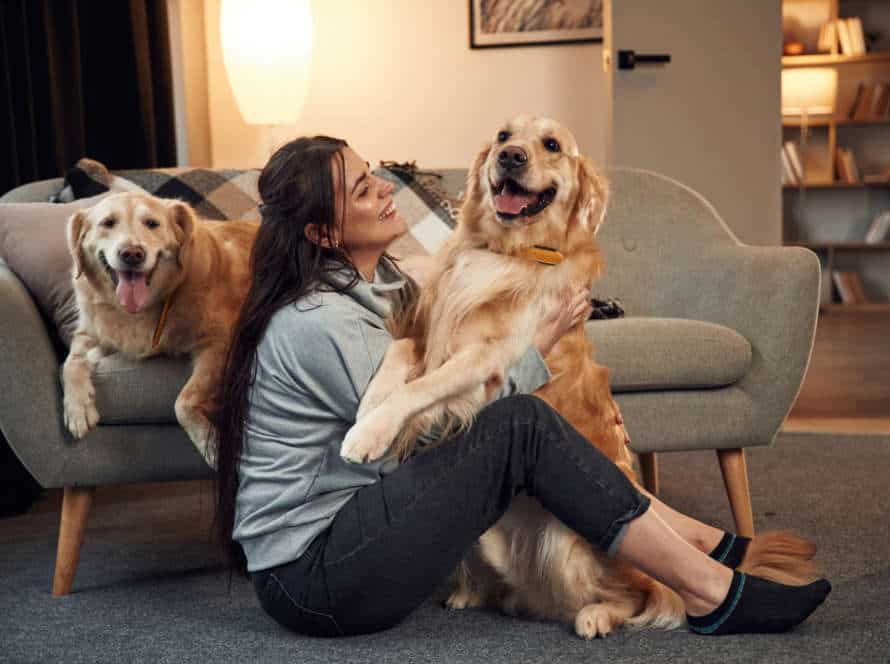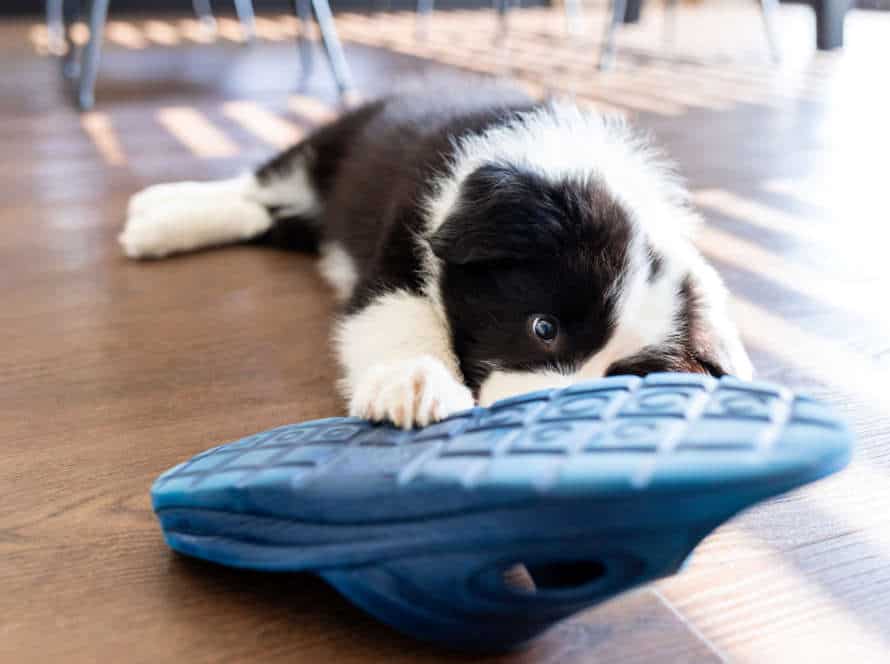Establishing Boundaries After Crate Training: The Next Steps
It’s essential to set boundaries after crate training your pup. Here are some steps to do it:
- Take pup out for bathroom breaks regularly. Don’t let them wander or sniff around.
- Train pup to sit and wait before meals, toys, or treats.
- Teach them to walk beside you when going places or taking a walk.
- Use positive reinforcement and reward good behavior. Not punishment for bad.
- Stay consistent with training and create a routine that works.
With patience, time, and rewards, your pet will learn boundaries and stay well-behaved.
Creating a safe space beyond the crate
Establishing boundaries is key after crate training. It gives your pup a safe space. To help them learn how to act and explore, it’s essential to extend this zone. In this article, we discuss the importance of boundaries and how to set them.
Introducing your pup to a playpen
A playpen is great for introducing your pup to a safe and cozy area beyond their crate. Follow these tips to get started:
- Start small – put the open playpen in a peaceful corner of your home and let your pup explore.
- Make it pleasant – put your pup’s favorite items inside.
- Introduce boundaries – begin with a small section and expand over time.
- Supervise – keep an eye on your pup and remove any hazards.
- Foster play – use the playpen when playing with your pup.
Pro Tip: Reward positive behavior with praise, rewards and love – this will encourage good habits!
Selecting pup-friendly spaces indoors
When planning a pup-friendly space indoors, consider these factors to choose the best spot:
- Size – The space should match your pup’s size. Allow them room to move and play.
- Safety – Avoid hazards, sharp objects, and substances your pup may swallow.
- Accessibility – Make sure the space has easy access to water, toys, and training pads.
- Comfort – Provide a comfy bed and proper ventilation.
Remember to watch your pup in the area and adjust as needed for their safety. Pro Tip: Use baby gates or barriers to set boundaries and protect your pup.
Designating a secure outdoor area
Creating a secure outdoor area is a must once you have crate trained your pup. Here are some helpful tips to establish boundaries:
- Choose a spot and size that is big enough for them to move around and play but small enough to supervise.
- Install a sturdy fence and make sure the gate is secure.
- Eliminate any objects or plants that could be hazardous.
- Provide shelter and fresh water.
- Give them toys and activities like fetch or going for a walk to keep them entertained.
- Don’t forget to supervise them while they’re out there!
With these tips, you can make a safe and comfy spot for your pup beyond the crate.
Encouraging independence in a secure environment
Crate training is key when it comes to setting boundaries. Boundaries give your pup a sense of security. To foster independence, create a secure environment. This will help your doggy with their behavior in all situations. Here’s what you can do to encourage independence in your pet:
Gradually increasing time spent alone
To help your pet become independent, crate train them. Then, gradually increase the time they spend alone. Here’s how:
- Start with short periods of time while you’re home. Increase the duration until they’re comfortable with 1-2 hours.
- Provide plenty of chew toys and treats. Ensuring they have access to water and a comfortable sleeping space is important too.
- Be consistent in the routine and increase the alone time bit by bit. Always go at a pace that your pet can handle.
Positive reinforcement techniques for successful independence
Positive reinforcement is a great way to help your pet become more independent, while still keeping them secure. Here are some tips to try:
- Praise and Treats: Reward good behaviour with a treat and kind words. Let your pup know when they do something you like.
- Exploration: Give your pup access to different areas of your home and supervise them closely. Guide them through new places and reward them for staying within boundaries.
- Responsibilities: Give your pup small tasks that show independence and obedience. For example, have them find their toy or bring it to you.
- Commands: Make sure they know basic commands like sit, stay, and come. This helps them understand how to act and sets clear boundaries.
- Patience: You need to be patient when teaching your pup independence. Keep working with them and rewarding good behaviour and you’ll see progress. Never punish or scold them – it can damage their confidence.
Identifying and addressing separation anxiety
Separation anxiety is a condition that affects dogs when they feel distress and fear upon being away from their owners. Here are ways to recognise and help with this:
- Look for signs like barking, howling, destructive behaviour or toileting when left alone.
- Go slow with crate-training to make it a safe spot when not around.
- Set boundaries when home together.
- Teach self-soothing behaviours to help your dog be independent.
- Speak to a vet or trainer for a management plan to treat it.
Treating separation anxiety can take time and patience. But with the right help, your pup can learn to feel secure even when apart.
Keeping your pup engaged
Set up crate training for your pup! It’s important to keep them engaged and establish boundaries. Do this by being clear about expectations. Give them the right type of fun! Encourage activities and exercises to keep them active. Let’s discover different ways to stay engaged and maintain boundaries.
Active playtime with designated toys
Designating toys for active playtime is a great way to keep your pup engaged and entertained. Here are some tips to get started:
- Choose toys that fit your pup’s age, size, and play style. Soft, plush toys for gentle chewers. Durable rubber ones for aggressive chewers.
- Rotate the toys regularly. Limit access to a few at a time and switch them out every few days.
- Use toys for interactive play and training. Fetch, hide and seek and other activities to encourage physical and mental stimulation.
- Always supervise during playtime and throw away broken or hazardous toys.
- Pro-tip: Incorporate puzzle toys and treat dispensers for mental stimulation and to reward good behavior.
Keeping your pup mentally stimulated with brain games
Brain games are great for keeping your pup’s mind busy, improving their brain power, and avoiding boredom. Here are some fun and difficult games to keep your furry friend engaged:
- Hide-and-seek: This classic game is timeless. Start off by hiding a toy they love, and make it harder as they get better.
- Treat puzzles: These toys give out snacks when they solve it. They come in various shapes and sizes and will entertain them forever.
- Tug-of-war: Not only fun, but this activity can help you and your pup become closer.
- Find the toy: Hide their favorite toy and see if they can find it using their super-sniffer.
Pro tip: Always supervise them during games and avoid those that can cause aggression. Reward successful attempts!
Structured training and obedience sessions
Structure your pup’s training and obedience! Here are some tips:
- Set aside a regular time and place.
- Use treats and praise to motivate.
- Start simple, with “sit” and “stay”.
- Keep sessions short, no more than 15-20 min.
- Mix up different types of training.
- Be patient and end on a positive note.
Pro tip: Training is a great way to bond and teach special skills – consistency is key for long-term success!
Creating a healthy routine
Crate training is a great way to get your pup to understand the rules of your home. Establishing boundaries is key. Then, create a healthy routine. This will help your pup understand expectations and stop any anxiety or problems that could come up. Here’s how to create an efficient routine.
Establishing feeding and walking schedules
Creating a healthy routine for your pup after crate training? Follow these steps!
- Choose times for feeding & walking that work for you and your pup.
- Stick to a consistent feeding time, using measured portions to keep your pup at a good weight.
- Set up a predictable walking schedule; increase the duration & distance as your pup’s strength builds.
- Include play & socialization in your pup’s day-to-day to prevent ’em from getting bored.
By setting clear boundaries and a predictable routine, you’ll help your pup feel secure and lessen the chance of separation anxiety. Pro tip: Be patient and consistent when setting up a new routine – it may take some time for your pup to adjust.
Incorporating rest and relaxation time
Creating a daily routine for your pup is crucial for their physical and mental wellbeing. After crate training, boundaries are also essential for their safety and your tranquility. Here’s some advice to make it happen:
- Allot specific rest and chill-out times apart from playtime and exercise. This could include chew treats or a beloved toy to help them relax.
- Arrange regular exercise and playtime to help your dog use up extra energy and stay fit.
- Increase the time your pooch spends in the crate bit by bit to avoid anxiousness.
By adding rest and relaxation moments to your canine’s plan and setting limits after crate training, you can guarantee your pet stays content, healthy, and safe.
Balancing structure with flexibility to meet your pup’s needs.
After crate training, structure your pup’s routine with flexibility. Set rules, boundaries and stick to them. Keep feeding and watering regular. Exercise them daily – walk and play outside. Teach basic commands like sit, stay, come and heel. Praise & reward good behavior. Remember, your pup is an individual. Adapt their routine as their needs change.
Frequently Asked Questions
1. How do I establish boundaries after crate training?
After crate training, it’s important to create a designated area in the house where your dog can roam around freely. You can use baby gates or barriers to block off certain rooms or areas. Make sure to also provide your dog with a comfortable bed or mat in this designated area.
2. Do I need to keep using the crate after crate training?
No, you don’t necessarily have to keep using the crate after crate training. However, if your dog feels comfortable and safe in the crate, you can continue to use it as a resting place or a place to go to if your dog feels scared or overwhelmed.
3. How do I teach my dog to respect boundaries?
Consistency is key when teaching your dog to respect boundaries. Use positive reinforcement when your dog follows boundaries, and redirect your dog when they cross them. It’s also important to make sure that everyone in the household is on the same page when it comes to boundary training.
4. What are some common boundary rules that I should establish for my dog?
Common boundary rules include not allowing your dog on furniture or beds, not allowing your dog to beg at the dinner table, and not allowing your dog to jump on people. You can also establish boundaries outside, such as not allowing your dog to leave the designated yard or boundary line.
5. Can I still give my dog treats even though they’re supposed to follow boundaries?
Yes, you can still give your dog treats even if they’re following boundaries. Just make sure to only give treats as positive reinforcement when your dog is following the rules you’ve established.
6. How long does it typically take for a dog to learn boundaries?
The amount of time it takes for a dog to learn boundaries varies depending on the breed, age, and personality of the dog. Some dogs may take only a few days to learn, while others may take a few weeks or even months. Consistency and positive reinforcement are key in helping your dog learn boundaries.

